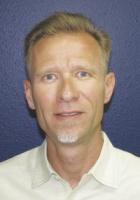Being in the machining business, you’ve probably considered diversifying your business or expanding your capabilities with “value-added services.” Our shop has certainly diversified.
But what does diversification really mean? Does it mean serving customers from various industries so your shop isn’t overly dependent on any one particular industry? Or does it mean diversifying your processes and capabilities to offer a wider array of services to the marketplace, including activities other than conventional metalcutting? Diversification could mean both scenarios, but this column addresses the latter.
Many machine shops have diversified by acquiring fabricating equipment, such as laser, waterjet and flame cutting machines and perhaps welding equipment.
Their logic goes something like this: “If we add fabrication capability, then we can process our own blanks for machining, and we can even sell these fabrication services.”
This seems reasonable and many machine shops have been successful at incorporating such equipment into their operations. On the other hand, some shops may find this venture too risky and choose instead to focus on what they do best—machining tight-tolerance parts and nothing else. There are viable arguments for going either way, but when evaluating whether a shop should expand into the fabrication world careful planning is in order.
In some ways, the current market lends itself to the acquisition of fabrication equipment because dealers are aggressive with pricing and payment options. Adding this type of equipment can provide a shop with the ability to eliminate outsourcing of blanks and other parts, gaining more control over the production process and decreasing lead times.
Fabrication equipment has improved and some of it may be able to perform precision functions and reduce more costly operations on machining centers. For instance, sometimes fabricating blanks with hole patterns can be done precisely enough to avoid milling the holes. Usually, performing these functions with a flame, waterjet or laser cutting machine is significantly faster and more cost-effective than machining the entire piece on a mill. This should free up production time for more complex machining activities, which command higher prices.
However, equipment diversification can be risky. A new piece of fabrication equipment will take time to optimize. In addition, when a shop incorporates a new piece of fabrication equipment that requires a lot of training, it can be disruptive and require additional personnel, including operators and programmers. Not to mention that the fabrication market is, in many cases, much more competitive than machining.
Another consideration is the potentially high cost of the equipment. And the initial cost isn’t the only expense. The equipment will require space, consumables and software.
Acquiring equipment can also be stressful because unexpected obstacles will definitely be part of the implement.
You also have to ensure your shop doesn’t become too broad in scope and end up losing its market niche. Our shop has always straddled the line between machining and fabrication, for better or worse. Positioning your shop to maintain its core strengths is essential.
However, if you can make equipment diversification work and have the wherewithal to integrate the equipment, then the payoff could be a boon for your shop. Under the current economic conditions, adding any equipment may seem like a far-fetched fantasy. But adding fabrication equipment can generate new opportunities.
If you’ve ever considered diversifying your capabilities, now may be the best time. Once you’ve re-established your customer base and positioned your shop to offer more, this recession will be a memory, hopefully a very valuable one. CTE
About the Author: Keith Jennings is president of Crow Corp., Tomball, Texas, a family-owned machine shop. He can be e-mailed at [email protected].
Related Glossary Terms
- centers
centers
Cone-shaped pins that support a workpiece by one or two ends during machining. The centers fit into holes drilled in the workpiece ends. Centers that turn with the workpiece are called “live” centers; those that do not are called “dead” centers.
- gang cutting ( milling)
gang cutting ( milling)
Machining with several cutters mounted on a single arbor, generally for simultaneous cutting.
- milling
milling
Machining operation in which metal or other material is removed by applying power to a rotating cutter. In vertical milling, the cutting tool is mounted vertically on the spindle. In horizontal milling, the cutting tool is mounted horizontally, either directly on the spindle or on an arbor. Horizontal milling is further broken down into conventional milling, where the cutter rotates opposite the direction of feed, or “up” into the workpiece; and climb milling, where the cutter rotates in the direction of feed, or “down” into the workpiece. Milling operations include plane or surface milling, endmilling, facemilling, angle milling, form milling and profiling.
- milling machine ( mill)
milling machine ( mill)
Runs endmills and arbor-mounted milling cutters. Features include a head with a spindle that drives the cutters; a column, knee and table that provide motion in the three Cartesian axes; and a base that supports the components and houses the cutting-fluid pump and reservoir. The work is mounted on the table and fed into the rotating cutter or endmill to accomplish the milling steps; vertical milling machines also feed endmills into the work by means of a spindle-mounted quill. Models range from small manual machines to big bed-type and duplex mills. All take one of three basic forms: vertical, horizontal or convertible horizontal/vertical. Vertical machines may be knee-type (the table is mounted on a knee that can be elevated) or bed-type (the table is securely supported and only moves horizontally). In general, horizontal machines are bigger and more powerful, while vertical machines are lighter but more versatile and easier to set up and operate.

